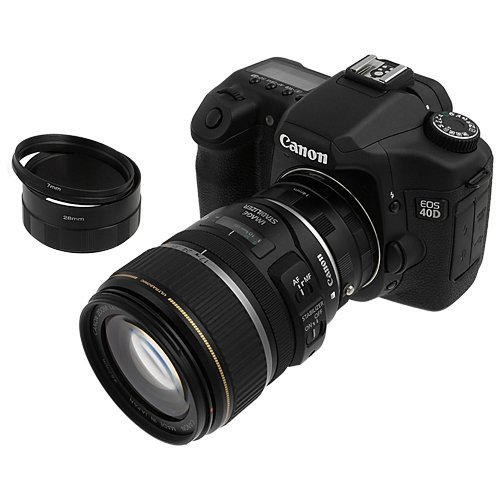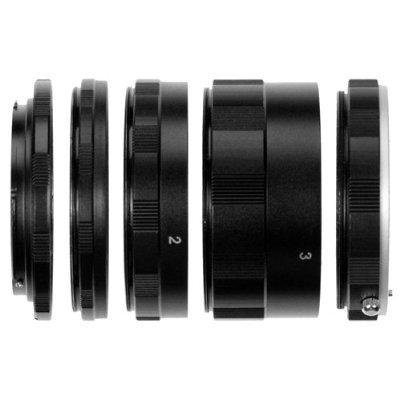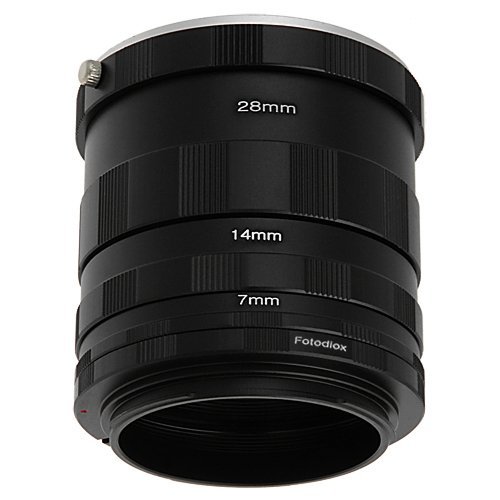Camera Hack! Make ANY Lens a Macro Lens for Under $15 + Quick Tips for Crisp Close-up Photography!
Macro extension tubes are a great camera hack that can help you get super-crisp close-up photography without shelling out big bucks for a new lens! (The extension tube I bought was under $15!) And they work with just about any prime or zoom lenses you already have.... though quality does suffer with some wide-angle lenses.

How Extension Tubes Work
Extension tubes are not optical devices, so they don’t have any glass. They are simply hollow, light-proof cylinders that fit between your existing lens and camera body. This extra distance moves the focus sensor in the camera farther from the subject, allowing you to move your lens much closer to the subject while still maintaining focus.
Different Kinds of Macro Extension Tubes
Because I’d not done much macro photography and had never used an extension tube before, I decided to try the least expensive one. It also happened to be the best seller, with good reviews!
I shoot with a Canon Rebel T3i, so I got the Fotodiox Canon EOS Macro Extension Tube Set. For Nikon fans, there’s also a Fotodiox Nikon Macro Extension Tube Kit. (Less than $15 each!)
These are actually made up of three extension rings: one 7mm, one 14mm, and one 28mm, which you can use individually or stack in various combinations to add up to 49mm.

The only “drawbacks” to these particular extension tubes? There are no electrical components connecting the lens to the camera body, so there’s no autofocus. Not a problem, really... just an extra step whenever you—or your subject—moves. And if your aperture is controlled on the camera body (not manual aperture rings on the lens) then the lens will stay open at the widest aperture, which gives you less depth of field to play with.
Macro Extension Tubes with Autofocus and Autoexposure
Thankfully, there are “active” extension tubes that do carry the electrical connection from the camera to the lens, so you can use autofocus and control aperture from the camera. These can range from $35-150, still a great value compared to buying a new macro lens.

Extra Tips for Getting the Crispest Macro Photos
Steady your camera! Even the slightest movement at these magnification levels will cause motion blur. A tripod is your best friend, but you can also just place the camera down on a flat surface.
If manually focusing, use the zoom buttons on the camera to see 5x and 10x magnification to make sure you’re on point.
Even using a tripod, your finger pressing the shutter button to take the picture will jiggle the camera slightly and reduce the sharpness of your image. Remote shutter buttons can solve that problem for under $10, but you can also just set your camera to shoot 2 seconds after you’ve pressed the shutter button, which solves the problem for free! Look ma, no hands! :)
I'd originally written this post a few weeks ago for @jamtaylor's "Viewfinder Steemzine Vol. 1 — Inspiration, Reviews, How To's, Behind The Photo, and more!"
It's now being posted here as a standalone piece, but definitely check out the rest of jam's Steemzine for great pics and photography tips from @condra, @runrudy, @lscottphotos, @avtzis.petros, @yzomri, and @shieha!
And don't miss @jamtaylor's weekly #SteemitPhotoChallenge! So much fun! I entered some black & white images from the open-air markets of Vietnam, Myanmar, and Korea for last week's contest... and I also posted the original color versions of them after someone requested to see them in the comments! :)
(Product images via Amazon)
I bought a camera bellows so the length can be easily adjusted without removing the lens each time. It's a little more money but worth it for the convenience. https://amzn.com/B00ACRH9RI
Another piece of advice is that you can actually close the aperture of your lens if it's body controlled. With lens attached set the desired f-value then hold the depth of field preview button while turning the camera off. This will keep the lens at the f-value you selected instead of wide open. This can be important because some fast lenses like a 50mm prime f/1.8 gives an extremely narrow depth of field on a macro extender. Closing the aperture some widens DOF.
And there's also the good old trick of making a hole in the lens and camera lids and attaching them to any tube.
I made a cardboard tube, works great
Greetings fellow photographer. Great post and some good resources for achieving it. Thanks for sharing. Upvoted and followed.
One can also use reverse lens rings to turn any prime lens into a macro.